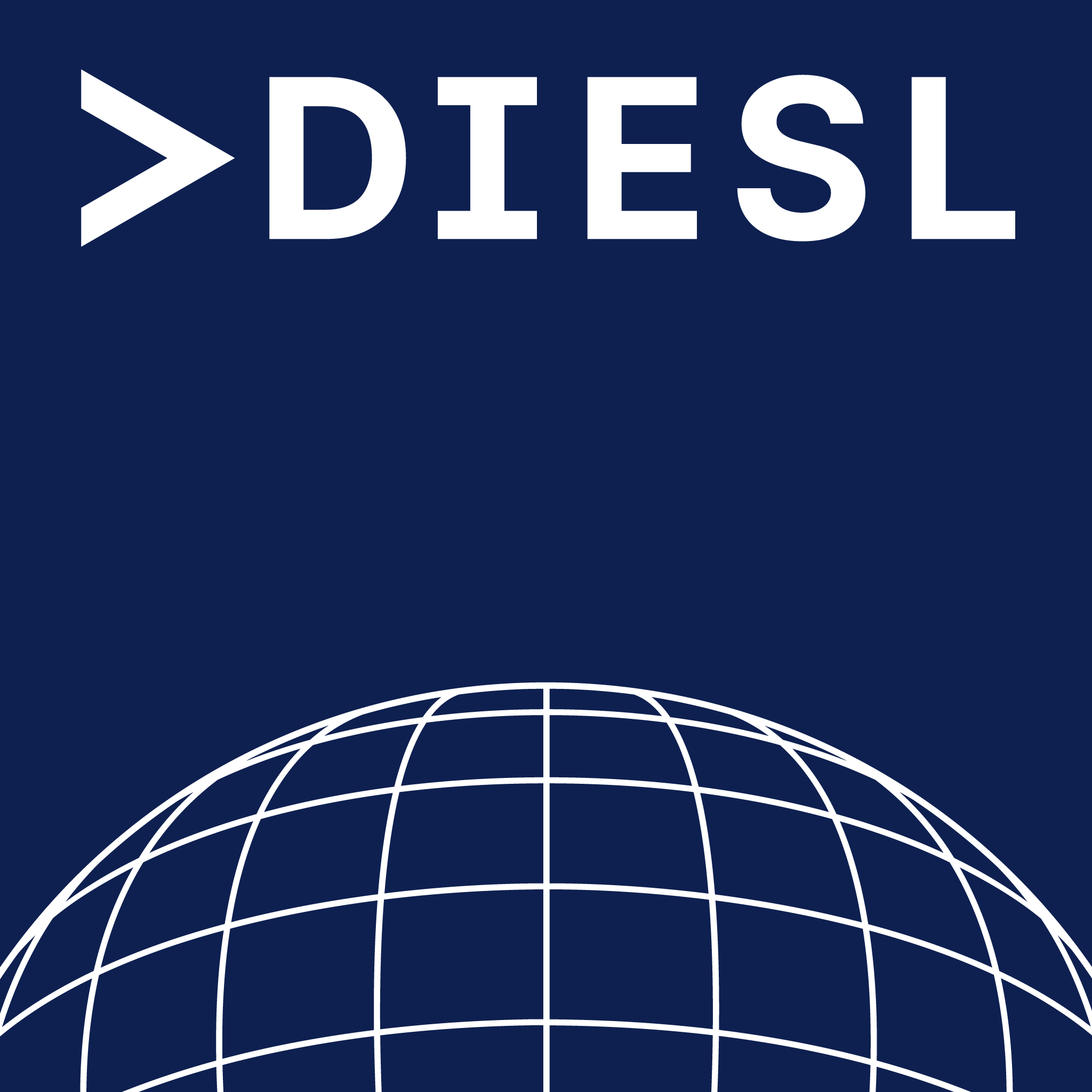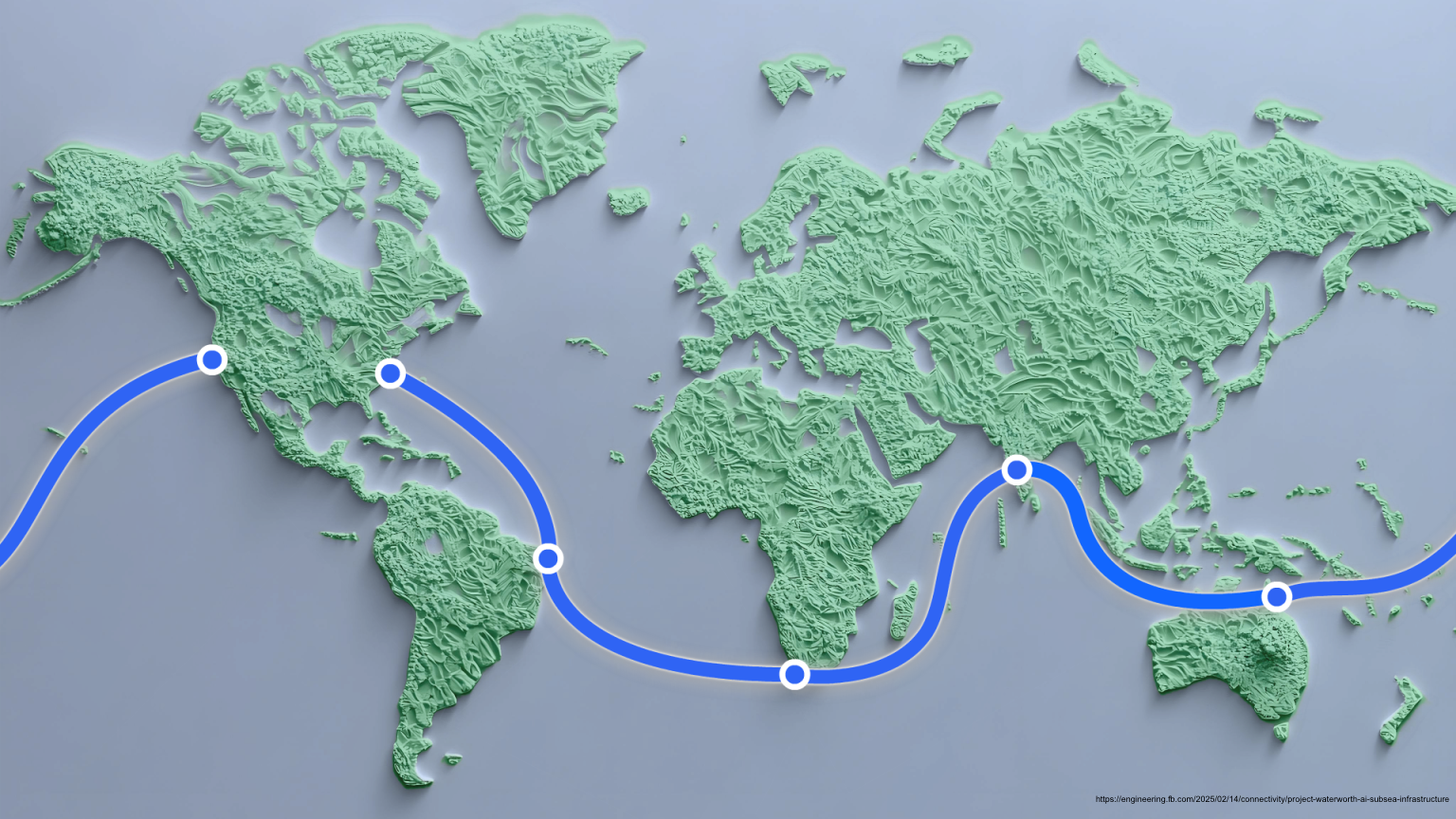Meta recently announced project Waterworth, the company’s plan to build the world’s longest submarine cable system. In this blog post, OII’s Professor Vili Lehdonvirta and DPhil candidate Anniki Mikelsaar ask what geopolitical and economic significance this massive new infrastructure project may have.
Key findings
- Meta’s control over the world’s longest cable highlights the growing concentration of digital infrastructure ownership by big tech companies, which strengthens their dominance in the physical infrastructure of the digital world.
- The cable bolsters US economic and infrastructural power by improving access to Southern hemisphere markets, supporting South-South connectivity, linking Latin America, Africa, and the Middle East, and helping to boost data traffic between the continents.
- The new route is designed to be resilient, avoiding geopolitical hotspots and the risk of cable damage in volatile regions.
How big tech is rewiring the world
When data moves between continents, it does so through fiberoptic undersea cables. Until recently, intercontinental undersea cables were mostly laid by large consortia of national telecommunications companies. For example, 2Africa, currently the longest cable in the world, was laid by a consortium of telcos plus Meta as an anchor customer. This consortium model was the norm because intercontinental cable projects require very significant capital investment to build.
But over the past decade, there has been a shift in which subsea cables are increasingly being built by large individual technology companies themselves. Google has deployed several wholly owned private cables, such as the Curie, Dunant, Grace Hopper, and Equiano. Meta has also previously procured the private Transatlantic Anjana cable. This reflects the fact that these firms are now large enough to have a business case for individually financing something that previously required a consortium to make economic sense.
Now Meta has announced Waterworth, the company’s plan to build the world’s longest submarine cable system. It will be Meta’s first single-contract private cable of this scale. It will be built primarily for the company’s internal consumption. The longest cable in the world will thus be owned by a single Silicon Valley firm. This shift may be significant to policymakers concerned with concentration in digital markets and infrastructure: not only do Big Tech firms dominate digital platforms and services, but increasingly also the physical underpinnings of the digital world. Rather than renting capacity from infrastructure providers, the firms are vertically integrating infrastructure with their content services. Around 60 new submarine cables are planned up until the year 2027. Google, Meta, Microsoft, and Amazon are all investing in new submarine cable systems.
Charting new routes
Waterworth’s route diverges from more established cable corridors. The current longest cable, 2Africa, starts from Europe to circle Africa and the Middle East. Waterworth skips Europe and China to connect the United States directly with major markets in the Southern Hemisphere. Unlike many existing intercontinental cables, Waterworth’s choice of route avoids geopolitical hotspots like the Red Sea and the South China Sea. Damage to Red Sea cables in February 2024 disrupted Internet access for several countries in East Africa. Having a cable which avoids such hotspots can therefore be beneficial for global networks’ resilience. This additional resilience will benefit Meta and potentially also other users leasing cable capacity from Meta through the secondary market.
Waterworth’s concentrated ownership and unconventional choice of route can moreover be seen as bolstering U.S. economic and infrastructural power abroad. The cable will give Meta and potentially other U.S. firms enhanced access to markets in the South. This could help better integrate these countries in digital trade with the U.S. It will also provide geoeconomic and informational advantages to the U.S. government. At the same time, Waterworth also provides new South-South connectivity directly between Latin America, Africa, and the Middle East, which may help boost data traffic between the continents
Further reading: Professor Vili Lehdonvirta discusses Meta’s sub-sea internet cable with BBC News.
Vili Lehdonvirta is Professor of Economic Sociology and Digital Social Research at the Oxford Internet Institute, University of Oxford, and Professor of Technology Policy at Aalto University. He is the head of the Digital Economic Security Lab DIESL and leads a major research project on the Geopolitics of Cloud Computing funded by the European Research Council.
Anniki Mikelsaar is a doctoral researcher at the Oxford Internet Institute, studying the governance of digital infrastructures and cable networks.

